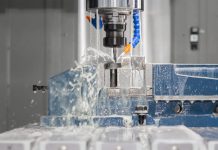Name any industry that hasn’t experienced the effects of innovation and digitization in the current world. You might probably have a hard time doing that. Likewise, the food and beverage industry is not far from experiencing the radical effect of digitization on factory production and distribution.
Food businesses are adopting smart technologies like Automation, IoT, data analytics, etc., to improve their processes. This digital transformation is changing the way the food industry does business. So, how are manufacturers exercising digitization to make this industry more resilient? Let’s find out.
Use Of Data
There is no denying the fact that no business can thrive without properly studying the data. If you are not leveraging data, you won’t be able to make necessary changes and gather useful insights. Manufacturers can use several foodmetrics tools to see exactly what scenario is in the market where they are delivering their services. It helps them make informed decisions that could prove beneficial for their business. For instance – Some businesses can determine the issues with the product and use predictive analysis.
Another example is you can use some tools to find out which outlets are delivering the food items or such products to their customers which you are producing. Let’s say you grow a special type of oregano. You can find through such tools how many food outlets use that specific oregano in their pizzas so that you can provide such businesses with fine quality ingredients. This data-driven process is only possible through digitization and innovation, making the food industry resilient.
Integrated Functions
Food and beverage production is not a one-step process. It includes multiple phases, starting from manufacturing to equipment to people. With the advent of digitization, food companies can get a 360-degree view of all the processes in a single view. Each and every process of food manufacturing is connected with the software that offers an overall view to the leadership.
It makes it easy to control or modify a process without the need to go to that physical location. These real-time data-integrated functions lead to higher equipment efficiency and ultimately reduce manufacturing errors.
Regulation Standards
Compliance holds an important place in the modern world of digitization. But many consider it as something complicated to deal with. There could be several reasons for the same. One of these is decision-makers not being fully aware of the scope of digitization and how much data needs to be safeguarded. You cannot deny that the food and beverage industry is one of the most tightly regulated industries all over the world, having multiple FDA regulations to follow.
Using innovation and technology for Hazard Analysis and Critical Control Point processes and maintaining databases for your food business allows you to keep up with the visibility of your business to ensure compliance as far as food safety standards are concerned.
Implementing Automation
Food businesses that invest in AI are said to improve worker’s productivity. Automating manual processes is not just limited to extending the value of the food chain from the farm to the dinner table but goes beyond that. Robotic farming, in combination with crop-status analysis, automated storage, and retrieval systems, are some of the examples.
Talking about packaging facilities, retail stores can use robotics to automate repetitive processes. Consequently, it results in less human errors. So, it is not wrong to say that automation has the power to enhance the ability of the food and beverage industry to overcome challenges that occur due to climate change and global food security.
Precision Farming
Advanced technologies have revolutionized the way of farming. Now, precision farming (which comes under smart agriculture) has come to optimize the crop cultivation process. It makes the most of the network of interconnected devices and data analytics to provide manufacturers and farmers with real-time insights into their field conditions. Furthermore, IoT (Internet of Things) devices, when used strategically, assist in monitoring vital factors like nutrient levels, soil moisture, and pest activity.
Precision farming is also about automating certain tasks. Automated machinery, guided by GPS and sensor data, can perform precise actions such as planting, harvesting, and even applying pesticides. This not only reduces the physical burden on farmers but also ensures that these tasks are carried out with unparalleled accuracy, further optimizing the use of resources. The integration of precision farming into the broader digitization efforts marks a pivotal step towards a smarter, more adaptive, and resilient food industry.
To Make A Long Story Short
Believe it or not, digitization is an upward trend that is not going anywhere soon. Using big data, automation, compliance standards, and integrating advanced technologies presents many growth opportunities for you. The ongoing revolution is a testament to the industry’s adaptability and resilience in the face of unprecedented challenges. Navigating uncertainty through digitization is not just a strategic choice; it’s a necessity for a thriving and resilient food industry in the decades to come.




































